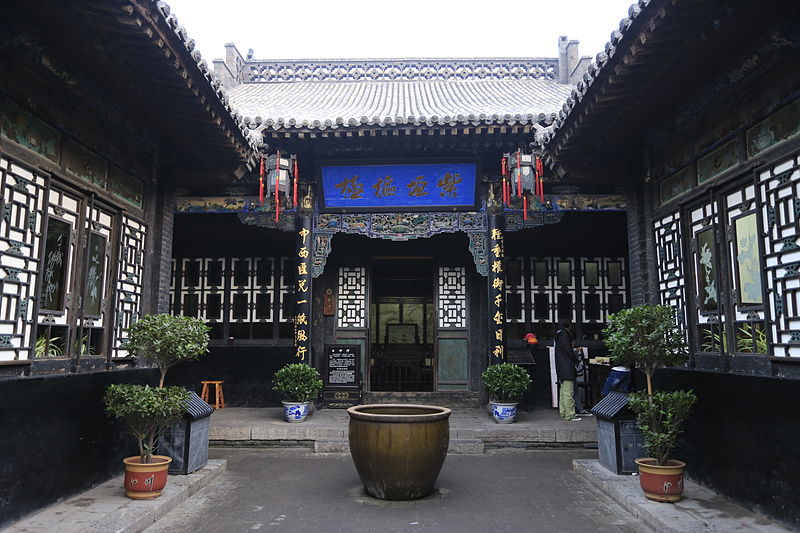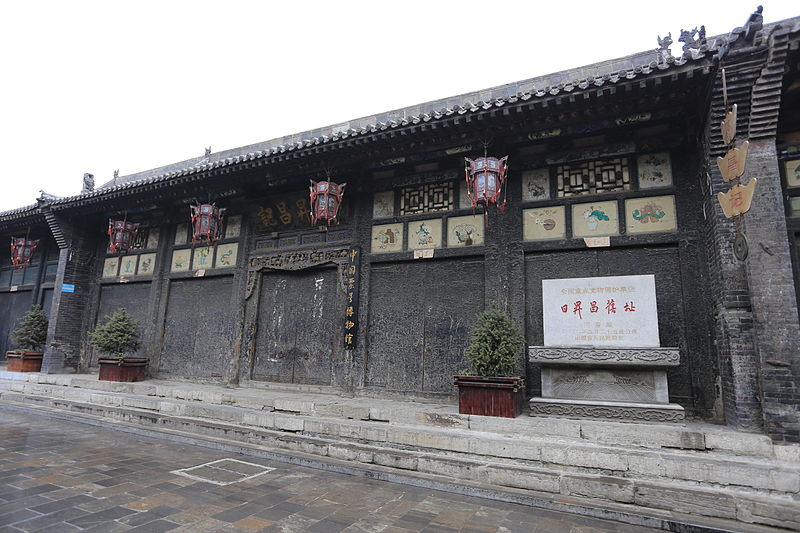The Rishengchang Former Bank, located in the ancient city of Pingyao in Shanxi Province, China, stands as a testament to the pioneering spirit of Chinese entrepreneurship and the birth of modern banking in China. Established in the early 19th century during the Qing Dynasty (1644-1912), Rishengchang was the first modern bank in China and played a pivotal role in facilitating trade, finance, and commerce across the country.

The founding of Rishengchang marked a significant milestone in the evolution of China’s financial system. Prior to its establishment, traditional forms of money transfer and credit were cumbersome and unreliable, relying on informal networks of moneylenders, pawnbrokers, and guild associations. Rishengchang revolutionized the financial landscape by introducing standardized banking practices, including the issuance of bills of exchange, the provision of deposit and loan services, and the establishment of a network of branch offices across the country.
The Rishengchang Former Bank is housed in a grandiose building located on the Ming and Qing Dynasties Street in Pingyao’s historic district. The building’s imposing façade features intricate woodcarvings, ornate lattice windows, and a majestic entrance gate adorned with traditional Chinese motifs. Inside, the bank’s interior retains much of its original architectural splendor, with soaring ceilings, decorative moldings, and polished wooden furnishings evoking a sense of opulence and prestige.
At its peak, Rishengchang was the largest and most influential bank in China, with a network of over 30 branch offices scattered across major commercial centers such as Beijing, Tianjin, and Shanghai. The bank’s success was built on a foundation of trust, reliability, and efficiency, earning it a reputation as a model of financial integrity and stability in an era marked by political turmoil and economic uncertainty.
One of the key innovations pioneered by Rishengchang was the use of bills of exchange, known as “drafts” or “draft bank notes,” to facilitate long-distance trade and remittances. Merchants and traders could deposit funds at one branch of Rishengchang and receive a draft that could be cashed at another branch, eliminating the need for cumbersome and risky transportation of physical currency. This system of “flying money” revolutionized commerce in China and contributed to the growth of a nationwide market economy.
In addition to its role in facilitating trade and finance, Rishengchang also played a significant role in the development of Pingyao as a thriving commercial center. The bank’s headquarters in Pingyao served as a focal point for economic activity, attracting merchants, entrepreneurs, and craftsmen from across the region. The city’s prosperity was further enhanced by the establishment of other financial institutions, trading companies, and guild associations, which contributed to its status as a hub of commerce and culture in northern China.
Despite its initial success, Rishengchang faced numerous challenges in the late 19th and early 20th centuries, including political instability, foreign competition, and technological innovation. The decline of the Qing Dynasty and the onset of the modern era brought about significant changes in China’s financial landscape, leading to the eventual demise of Rishengchang and the transformation of China’s banking system.
Today, the Rishengchang Former Bank stands as a poignant reminder of China’s rich cultural heritage and entrepreneurial spirit. Recognized as a UNESCO World Heritage Site and a national key cultural relic, the bank’s historic significance transcends its architectural beauty, serving as a symbol of China’s emergence as a global economic power and a testament to the enduring legacy of innovation and resilience in the face of change. As visitors explore its grand halls and storied corridors, they are transported back in time to an era of economic vitality, cultural exchange, and financial innovation that continues to inspire and captivate audiences around the world.

